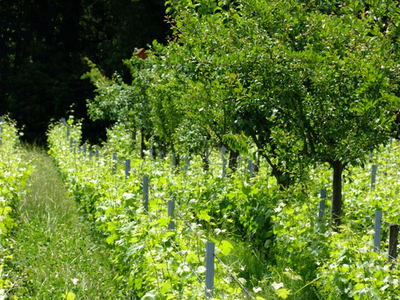Agroforesty for carbon sequestration in biomass and resilience to climatic events.

MOMENT OF INNOVATION..
INNOVATION STATUS.
"Agroforestry" is a generic term that refers to a way of exploiting agricultural land combining trees and crops or pastures. Once commonplace in Europe, these practices were phased out during the 20th century, mainly for reasons related to the intensification and mechanization of agriculture. Recently, a "modern" agroforestry has emerged, associating tree alignments and inserted filed crops.
Agroforestry presents a great diversity of systems, which differ in the species planted, their density and their disposition in the plot.
The analysis of the bibliography on the additional storage of carbon in trees and soil shows a high variability of storages measured according to the pedoclimatic context, the type of agroforestry system (especially the density of trees) or the method used. (depth of soil taken into account ...). Very few measurements have been made in temperate climates.
In addition to its role in carbon sequestration, agroforestry would be a means of adapting to climate change by protecting crops against climatic excesses (including early spring heat stress). Competition for water between trees and crops could be increased in case of more frequent or more pronounced droughts, but the technical choices explored (low tree density, soils with high useful reserves) tend to minimizing this risk.

